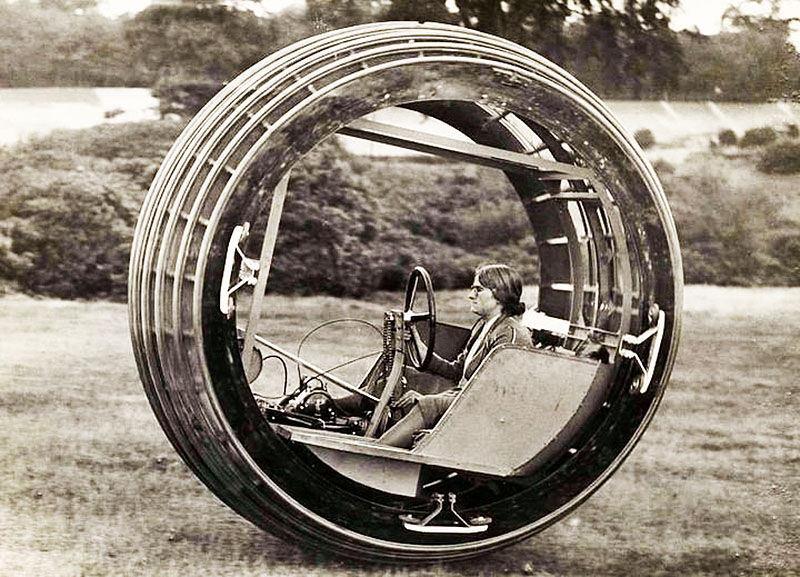The concept of a dynasphere is both fascinating and futuristic, encapsulating the spirit of innovation in transportation technology. A dynasphere, or gyroscopic monowheel, is a form of transportation that relies on the principles of gyroscopic motion to maintain balance while moving forward. This article delves into the history, mechanics, and potential future applications of the dynasphere, showcasing it as a symbol of how creative thinking can lead to unconventional yet promising solutions in the realm of mobility.
The Genesis of the Dynasphere
The idea of a vehicle that operates on a single wheel by balancing itself using gyroscopic forces is not new. The concept dates back to the early 20th century when inventors were fascinated with the idea of creating a new mode of transportation that could revolutionize how people move.
The term “dynasphere” is often associated with Dr. J.A. Purves, who in the 1930s, designed and built such a vehicle in an attempt to introduce a new form of transportation. The vehicle consisted of a large wheel with the driver and the engine housed inside.
The appeal of the dynasphere lay in its simplicity and the promise of a novel driving experience.
How the Dynasphere Works
At the heart of the dynasphere’s operation is the concept of gyroscopic motion. A gyroscope is a device that uses Earth’s gravity to maintain orientation. In the context of the dynasphere, the large wheel acts as a gyroscope, stabilizing the vehicle as it moves.
The driver sits inside the wheel, with controls for acceleration, braking, and steering. As the dynasphere accelerates, the gyroscopic effect becomes more pronounced, helping to keep the vehicle upright and balanced.
One of the main challenges of operating a dynasphere is mastering the dynamics of gyroscopic precession, which can cause the vehicle to veer in unexpected directions if not controlled properly. This requires skill and practice to navigate effectively, adding a unique challenge to the driving experience.
Potential and Limitations
The dynasphere stands out for its distinctive design and the unique driving mechanism it employs. Its potential applications range from personal transportation to entertainment and even educational purposes, where it can serve as a practical example of gyroscopic physics in action.
However, the practicality of the dynasphere in modern transportation is limited by several factors, including safety concerns, limited speed, and the challenge of navigating in traffic with such an unconventional vehicle.
Despite these limitations, the dynasphere has enjoyed a resurgence of interest in recent years, particularly among enthusiasts of vintage and experimental vehicles. It is celebrated not only for its innovative design but also for its bold vision of the future of transportation.
The Future of Dynaspheres
While it’s unlikely that dynaspheres will replace conventional vehicles on a large scale, they continue to inspire inventors and engineers to think outside the box.
The principles behind the dynasphere are being explored in various fields, including robotics and space exploration, where gyroscopic stability can play a crucial role.
The dynasphere serves as a testament to human creativity and the relentless pursuit of innovation. It reminds us that the future of transportation could be shaped by revisiting and reimagining past inventions, potentially leading to breakthroughs that could transform how we navigate our world.
Conclusion
Although the dynasphere might not have revolutionised transportation as its inventors hoped, it remains a fascinating chapter in the history of mobility. Its legacy lies in its contribution to the ongoing conversation about sustainable, efficient, and innovative forms of transportation.
The dynasphere challenges us to continue pushing the boundaries of what is possible, encouraging a future where our journey is as dynamic and diverse as the destinations we seek to explore.

Leave a Reply